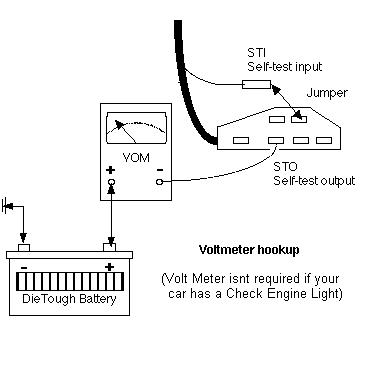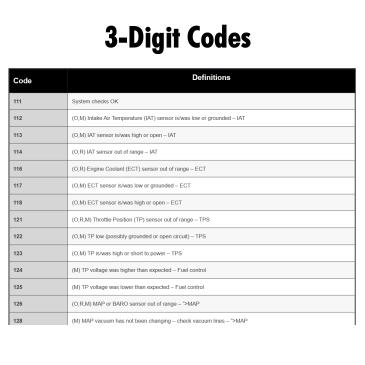Y'all were busy last night. I was tired. So I turned off the world and went to bed early.
Great progress has been made. But let's clean up a few minor things.
First, I would recommend using the resistance range shown in the book for your fuel level sender. My book also shows 22.5 ohms empty and 145 ohms full. Unless you completely empty the tank or completely fill the tank or pull the sender out of the tank to manipulate it with your hands, we don't know exactly what the current resistance value should be. It should also be noted that if the truck sat for a long time with fuel at a certain level, there could be dirt, varnished fuel or corrosion on the part of the sender that was exposed to air and moisture for a long time.
Next "slosh module" or "anti-slosh module"? Technically it should be anti-slosh because it's purpose is to counteract the action of the fuel sloshing around in the tank and making the sending unit float rise and fall violently. Ford called it a slosh module right there in the book. So, that term should be good enough for our discussions. It just uses some electronic wizardry to slow down the changes in voltage signal coming back from the sending unit so that the gauge in the instrument cluster doesn't try to mimic the crazy actions of the sending unit float. Trust me. You don't want to watch that dance. (Similarly, people will talk about "sway bars" in their suspension. They are actually anti-sway bars because they reduce or counteract the swaying motion of the vehicle. We are just lazy and dont want to say anti-sway bars.)
I like your comparison of the ohms symbol to a set of headphones. It is the greek letter omega and that is the official symbol for ohms, the unit of electrical resistance. Your meter has several resistance ranges. When using a multimeter, you always want to choose the range that most closely corresponds to the range of values you expect to measure. In this case, you are hoping to measure values between 0 ohms (short circuit, like a bare wire touching ground) and 145 ohms (full value of the sending unit).
DMM. Stands for Digital Mulimeter. That is the meter you bought. It is called a multimeter because it can measure multiple things like ohms, volts and small amounts of amps. A meter with a needle that sweeps across a scale from side to side is an analog meter or analog multimeter. But almost nobody calls it that or abbreviates it as AMM. So, we will usually just call it a meter or multimeter. If somebody says to use your voltmeter or ohmmeter, just use your multimeter set to the proper scale. The meter you bought should be adequate for almost anything you need to do on a Ranger.
People will often use slang terms, abbreviations and acronyms in discussions like we are having. I try to avoid this or define/explain the term when talking to a newbie who is just learning from the start. Don't be afraid to ask (as you have done) when someone uses a term you're not familiar with. Someone else may be reading the thread and they dont know either. So, it helps everyone.
Pot. No, we're not talking about drugs. This is an abbreviation or slang term for potentiometer. A potentiometer is a variable resistor, sometimes also called a rheostat. You have been using them all your life. The volume knob on a radio is a good example. You turn the knob and it changes the resistance that the circuit sees. The fuel level sending unit is a big, clumsy potentiometer. As fuel level changes, it raises or lowers a float on an arm that acts as the knob on the potentiometer and changes the resistance. The way the circuit is wired, this changes the voltage sent to the slosh module and gauge at the intrument cluster and makes the needle on the gauge move accordingly. That's the simple explanation. In that other video, the gentleman is just substituting a manual potentiometer in place of the fuel level sender so he can test the slosh module and gauge.
One other helpful hint at this time. When you disconnect a plug in a wiring harness, MOST OF THE TIME (no guarentees) the female side (has the holes that the pins slide into) will be the part that goes back to source voltage, like the battery, fuse, etc. And the male side with the pins will go to the device, like the fuel sender, windshield wiper motor, radio, etc. That is to help prevent a disconnected plug from touching ground and shorting out, which could blow a fuse, destroy a circuit board or even start a fire. It's just like in your house. The receptacle outlets in the wall are female. It's difficult to accidentally touch them and get shocked. The plug on your lamp cord has the male part. It is exposed and you can touch it. But when unplugged, it is dead and safe to touch.















